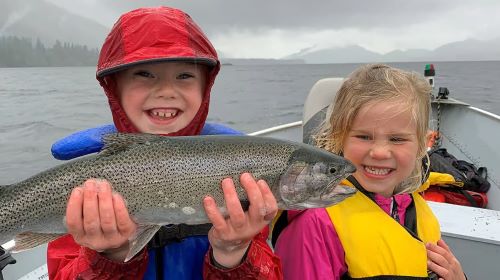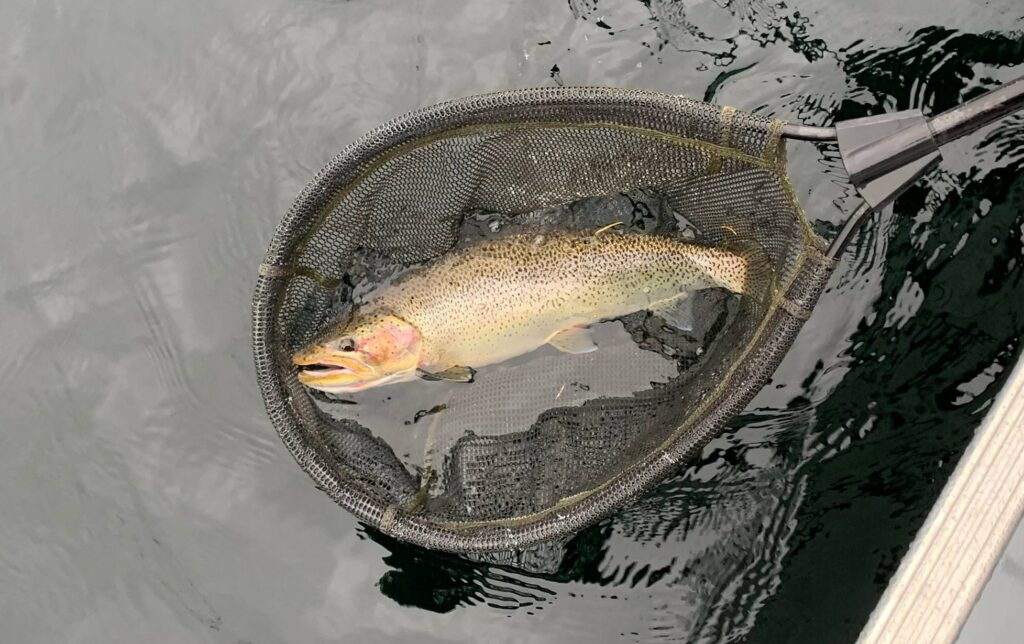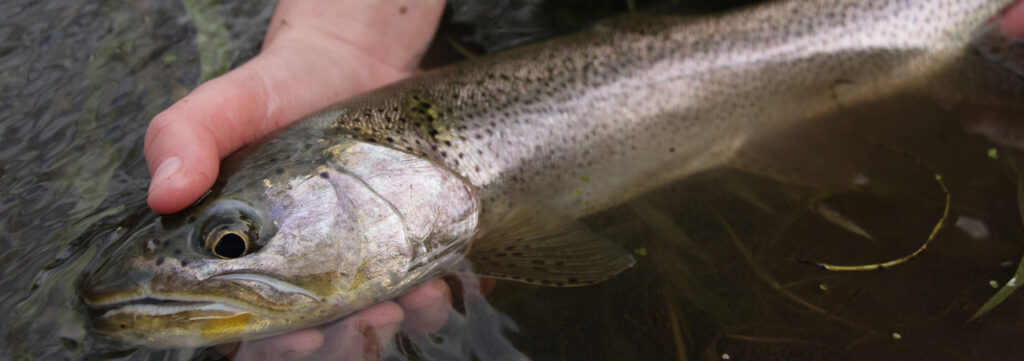The word “searun” may imply that this cutthroat trout spends a lot of its life in the ocean, but that just isn’t true. To help you become a better cutthroat angler, it’s important that you know some facts concerning the life cycle of these fish.

Cutthroat trout migration patterns
The Fraser River’s searun cutthroat actually spend most of their lives in freshwater, in the main river and its tributaries. Similar to salmon, wild searun cutthroat typically migrate to saltwater as two-year-old smolts (and hatchery-reared cutthroat may migrate as one-year-olds). This migration takes place in May and June but, unlike salmon, they return to their natal systems as 25- to 33-centimetre feeders beginning as early as August, and continuing through to December. They once again migrate to sea the following May and June, returning from August to December as mature, 35- to 55-centimetre three- to four-year-olds to spawn.
Cutthroat trout diet
The main reason cutthroat smolts migrate to the saltwater or estuary is to feed. These voracious fish hunt constantly for food their entire lives, except during their two- to three-week spawning period. The eggs and fry of salmon and other fish, stickleback, stoneflies, chironomids, and juvenile crayfish are their staple food sources. While virtually all cutthroat in the Fraser River and its tributaries have anadromous genes, some living in extremely nutrient-rich environments (like the Harrison River) do not need to migrate to sea.


Fly-fishing equipment and patterns for cutthroat trout
Their constant search for food makes these fish extremely nomadic: catching them in a location one day does not mean they will be there the next. The mainstem Fraser from Mission to Hope, the Harrison River, and numerous food-rich tributaries of the Fraser hold both resident and migrating cutthroat … you just have to find where they are. Areas to fish are backwaters, side channels, slow-moving shallow riffles at the top of gravel bars, and tailouts of long, quicker sections of water. The three most popular methods for fishing cutthroat are fly-fishing, bait fishing, and spin fishing.
Your fly-fishing arsenal should include a floating, an intermediate sinking, and a faster-sinking (Type 3 or 4) line to cover all the different depths of cutthroat habitat. Minnow, leech, various stonefly nymph, and even small chironomid fly patterns can all be very effective.
Bait and spin fishing for cutthroat trout
Bait fishing and spin fishing for cutthroat go hand-in-hand. Bait fishing generally includes drifting baits below fishing floats, fishing baits right on the bottom, or free-drifting baits just off the bottom. The two most popular baits are worms or salmon egg products (including single eggs). To fish bait you can use spinning reels, single-action drift reels, or ultralight levelwind reels matched with six- to 10-foot ultralight fishing rods. Casting small spoons (like the Luhr Jensen Krocodile, Hildebrandt, Dick Nite, or Gibbs-Delta Kit-A-Mat) with spinning gear is also very effective.
Tips for where to fish for cutthroat trout
Some things to keep in mind when looking for cutthroat:
• always watch for moving or feeding fish
• opportunistic feeders, they’ll be in the vicinity of spawning salmon
• a schooling fish, you’ll rarely find only one cutthroat by itself
• the mainstem Fraser and its tributaries cover a vast area; be prepared to put in some legwork when searching for hot spots, but it will be worth it.
You are allowed to retain two hatchery cutthroat (these will have missing adipose fins) per day over 30 centimetres when river fishing, and only one of these may be over 50 centimetres. All wild trout/ char caught in streams must be released. Always check the Freshwater Regulations Synopsis prior to heading out.
Author: Nick Basok, Freshwater Fisheries Soceity of BC Fishing Advisor
Banner Image: Anthony Bucci
